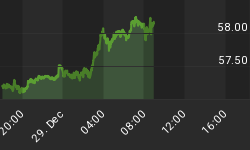The past week provided clear lessons not just in how central bankers have a limited ability to positively influence the economy but also how they are limited in their capacity to deliver the shortsighted policy actions that investors currently crave. The developments should provide new reasons for investors and economy watchers to abandon their faith in central bankers as super heroes capable of saving the economy.
The employment report released on Friday confirmed that the U.S. economy is stagnating at best and actively deteriorating at worst. While the numbers of jobs created in July was actually better than many economists expected, it was still far below the levels that would indicate a growing economy. But more important than the official unemployment rate (which ticked up to 8.3%) or the number of jobs created, is the number of people who have left the workforce out of frustration or despair. This number continues to head higher. The labor force participation rate, which is the percentage of healthy working age Americans who actually have jobs, is at one of the lowest points since women first started working en masse in the 1970's. It's also instructive to add back into the unemployment rate those who want full time jobs but who have had to settle for part time work. This figure, reported under the "U6" category, currently stands at 15.0%. This is just a 12% decline from the 17.1% high seen December 2009. In contrast the "official" (U3) unemployment figure has declined 17% from its peak.
In explaining these bad results, most economists simply look at the stimulating effects of monetary and fiscal policy, not at the problems that those measures create. As a result, it is assumed that not enough stimulation, in the form of quantitative easing or federal deficit spending has been applied to the economy. The next logical assumption is that if the measures of the past few years had not been applied, we would have seen much weaker results over that time. In other words, no matter how bad things are now, defenders of the status quo will always describe how bad things "could have been" if the Fed hadn't stepped in. This counterfactual argument gets increasingly threadbare as the years wear on.
Rather than admit that its policies have failed, the Fed statement last week gave all indications that it will continue with its current inflationary policy to the bitter end. These are the same errors that inflated the stock and real estate bubbles and ultimately resulted in the 2008 financial crisis and our continuing economic malaise. Without any fresh ideas, Fed press releases have become a Groundhog Day repetition of the same pronouncements and diagnoses. Oddly, many market watchers are frustrated that the Fed has not telegraphed that more stimulus is forthcoming. While it should be obvious that our current "recovery" is dependent on monetary support, it should be equally plain that the Fed can't actually admit that fragility without spooking markets. To be clear, QE III is coming, but the markets should not expect Bernanke to supply a precise timetable.
Without question, if the Fed had not stimulated the economy with zero percent interest rates, two rounds of quantitative easing and operation twist, the initial economic contraction would have been sharper. But such short-term pain would have been constructive. By not taking away the cheap-money punch bowl, the Fed has delayed the pain and prolonged the party. But to what end? So far all we have received is a tepid phony recovery that has sown the seeds of its own destruction.
In contrast, real economic restructuring would have resulted if the Fed had withdrawn its monetary props. This would have paved the way for a robust, sustainable recovery. Instead, the Fed helped numb the pain with unprecedented (and apparently permanent) liquidity injections. Its actions merely exacerbate the underlying imbalances that lie at the root of our structural problems, and thus act as a barrier to a real recovery. So long as the Fed fails to learn from its prior mistakes, the phony recovery it has concocted will continue to fade until we find ourselves in an even deeper recession than the one we experienced in 2008.
Those who believe that artificially low interest rates are needed now, fail to see the price that will be paid down the road. By keeping rates too low, the Fed continues to lead an overly indebted economy deeper into the financial abyss. However, its ability to maintain rates at such low levels is not without limits. Just as real estate prices could not stay high forever, interest rates cannot stay low forever. When rates finally rise, the extent of the economic damage will finally be revealed.
The sad fact is that no matter how impotent and dishonest Fed officials become, their elected rivals on Capitol Hill (who control the fiscal side of the equation) have become even less significant. The complete lack of any political conviction to take steps to confront our fiscal imbalances means that Ben Bernanke and his cohorts are seen as the only cavalry capable of riding to the rescue. But no matter how often they blow their bugles, our economy will continue to deteriorate until we stop waiting for a savior and instead fight the battle for prosperity ourselves.
















